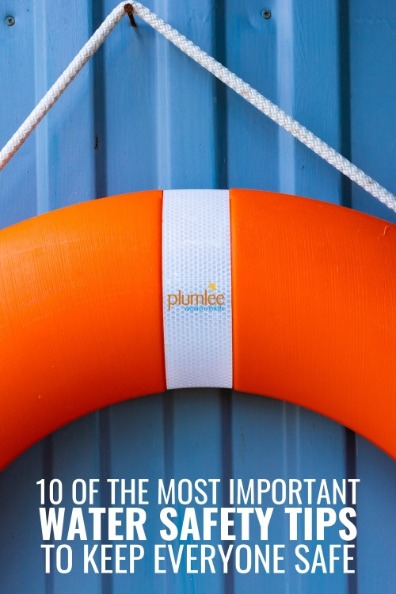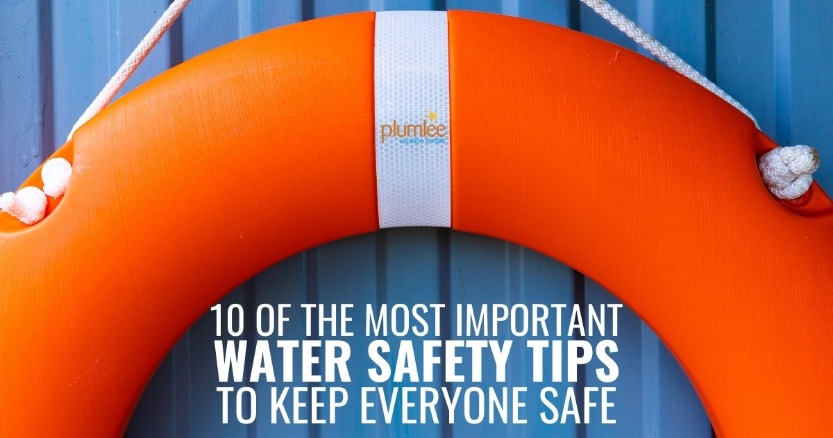
Did you know that May is National Water Safety Month? It is! There’s no better time than now to start talking to your kids about how to have a safe, fun and fabulous Florida beach vacation. Whether you’re spending time in and around the gorgeous Gulf of Mexico waters or enjoying the pool at your favorite Indian Rocks Beach vacation rental condo, water safety is a discussion you want to have with your family before your stay.
You can start right here with these 10 important water safety tips that will keep everyone in your family safe. Also set aside a few minutes after reading this to watch the water and beach safety videos we’ve included at the end of this post. These tips and those videos will help you and your family to be water smart and ready for your beach and pool days without worry.
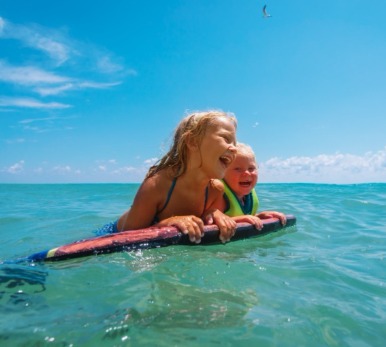
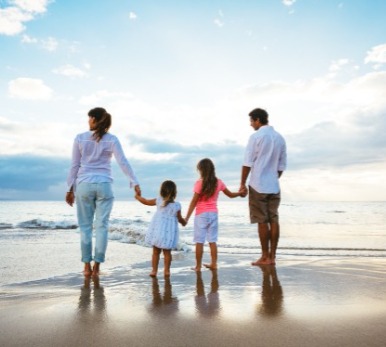
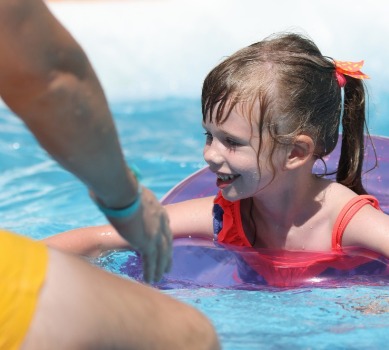
10 WATER SAFETY TIPS FOR FAMILIES
1. ALWAYS SWIM WITH A BUDDY. NEVER SWIM ALONE!
You know what they say: there’s safety in numbers. That holds true in any situation where there can be potential danger or hazards. Despite the usual calm nature of the Gulf of Mexico waters and the typical low wave action, it is still part of the natural world and therefore can be unpredictable. It’s always best practice to swim with a buddy. It’s more fun, too!
Here are some other beach and water safety tips to remember:
- Young children and poor swimmers should always be within arm’s reach of a good swimmer.
- Water wings, floats, and pool noodles are not approved flotation devices.
- If there are lifeguards, locate them ahead of time and stay nearby (especially if you have kids). Just remember that they are not babysitters.
- Assign a designated Water Watcher who focuses 100% of their attention on the kids in and around the water, and rotate that responsibility every 15 minutes.
2. CHECK THE BEACH FLAGS & KNOW WHAT THEY MEAN.
The safety and enjoyment of Florida’s public beaches are affected by changes in tide and surf conditions. To minimize the risks of drowning or serious injury, the Florida Coastal Management Program worked with other state organizations to develop a uniform warning flag program for use by Florida’s beachfront communities. Florida’s beach warning flag program uses flags in four colors accompanied by interpretive signs along the beach to explain the meaning of each color. (An absence of beach flags doesn’t guarantee that it’s safe. Remember to use your own good judgment.)
- Double Red: Danger! Water Closed to Public
- Single Red: High Hazard, High Surf and/or Strong Currents
- Yellow: Medium Hazard, Moderate Surf and/or Currents
- Green: Low Hazard, Calm Conditions, Exercise Caution
- Purple: Dangerous Marine Life (Usually Jellyfish)
3. KNOW HOW TO GET OUT OF A RIP CURRENT.
It’s best—especially when you’re in the water with kids or beginning swimmer—to avoid areas of moving water, waves or rip currents. And although avoidance is best, you should already know how to get out of a rip current if you find yourself or someone else caught up in one. First of all, don’t panic. Remain calm and begin to swim parallel to the shoreline. When out of the current, swim to the shore. If you can’t swim out of the current, float or tread water. Face the shore, wave your hands and yell for help if it is impossible for you to reach the shore.
4. KEEP AN EYE OUT FOR LIGHTNING AND GO INSIDE IF YOU SEE IT.
Lightning in Florida is a real danger. That goes double on the beach. If you hear thunder, get off the beach. The thunderstorms that tend to pop up on summer afternoons usually pass quickly, so you can probably get back to enjoying the outdoors soon. Don’t take any chances. Head inside!
5. ALCOHOL & WATER DON’T MIX.
Nearly half of all catastrophic injuries, including drownings, involve alcohol consumption. Even small amounts of alcohol can impair your judgement, balance and coordination. The level of alcohol in a person’s body is higher when they’re not drinking plenty of water and when they’re out in the sun—three factors that lead to dehydration. Whether you’re swimming, boating, jet-skiing or watching the kids at the beach, save that adult beverage for later.
6. KNOW WHAT REAL DROWNING LOOKS LIKE.
It’s not a happy topic to think about, but it is a reality to be proactive about. Drowning doesn’t look like what you see in movies and on TV. It’s important for you and your family to know what real drowning looks like, not what you think it looks like. It is often very quick and very quiet.
Here’s what you need to know about what real drowning looks like:
- Drowning people cannot wave for help—they’re naturally trying to keep their mouths above water, and waving their arms would allow them to sink.
- Drowning people alternate sinking below the water and then reappearing, but they’re not above the water long enough to fully inhale or call out.
- Drowning people’s bodies remain upright in the water, usually with no evidence of a supporting kick.
7. BE AWARE & OBSERVANT OF YOUR SURROUNDINGS.
As with any part of life, there are inherent risks and dangers all around you. There’s no need to be paranoid, but it does help to be aware and observant of your surroundings. The same holds true in the water and on the beach. Teach your family to be cognizant of what’s going on around them and informed of their surroundings. It can be something as simple as watching for fishing hooks, jellyfish, or doing the “Stingray Shuffle” to avoid an unwanted encounter in the water. It’s also good practice to remind your family to observe the local wildlife, but respect it enough not to touch it.
8. PAY ATTENTION AT THE POOL & KNOW THE RULES.
Every pool has its own set of rules. Take a few minutes to read over them with your family so everyone knows the expectations. You can also add in a few of your own family rules if necessary.
Here are some great proactive and preventative pool rules suggested for families:
- Children who do not know how to swim should hold an adult’s hand at all times when in the pool area.
- Children with swimming ability should never swim alone without a designated adult supervising.
- Present your children with different scenarios and quiz them on when it would be and would not be okay to go in the water. Discuss their answers thoroughly to be sure the limits are clearly established.
- Parents should train their child with swimming ability to ask permission to go in the pool by establishing contact with the supervising adult and asking the adult if they are ready for them to enter the pool.
- Never dive into water except when permitted by an adult who knows the depth of the water and has checked for underwater objects.
- Swimmers should never enter head first in less than 8 feet of water.
- No running on the pool deck.
- When jumping in, always jump facing away from the edge.
9. ENJOY THE NATURAL ELEMENTS BUT DON’T OVER DO IT.
Vacations in the sun and sand are the best! Just be careful not to over do it. Too much sun, too much activity, and too much alcohol can spoil your beach days. Remember to apply and reapply sunscreen, drink enough water to avoid dehydration, and get some well-deserved rest during your vacation days. The same principles apply to your kids. Make sure you allow for down time (don’t over-schedule their days), give them time to rest, nap and sleep in, and ensure that they’re drinking enough water and eating well. These are simple things that sometimes get overlooked with all the excitement that comes with a beach vacation.
10. STAY UP TO DATE WITH THE LATEST CPR PRACTICES.
It’s always prudent to familiarize and re-familiarize yourself with the latest CPR protocols and practices. You most likely never need to use them, but knowledge is power. You can read this quick rundown of CPR steps for yourself and with your family.
HELPFUL POOL & BEACH SAFETY VIDEOS
Pool & Water Safety While on Vacation
Watch this short video that reinforces many of the things we’ve discussed in this blog post. Pool and water safety are vital parts of any beach vacation or summer season. Bookmark this blog and these videos to review as needed. Proactive prevention is key to safety!
Beach Safety Tips from the Red Cross
The American Red Cross is the gold standard when it comes to safety. We found these quick beach tips to be helpful and perfect for families to be aware of and to discuss. Don’t forget to let your kids ask questions and give clarification when needed.
SHARE THESE WATER, POOL & BEACH SAFETY TIPS ON YOUR SOCIAL MEDIA!
